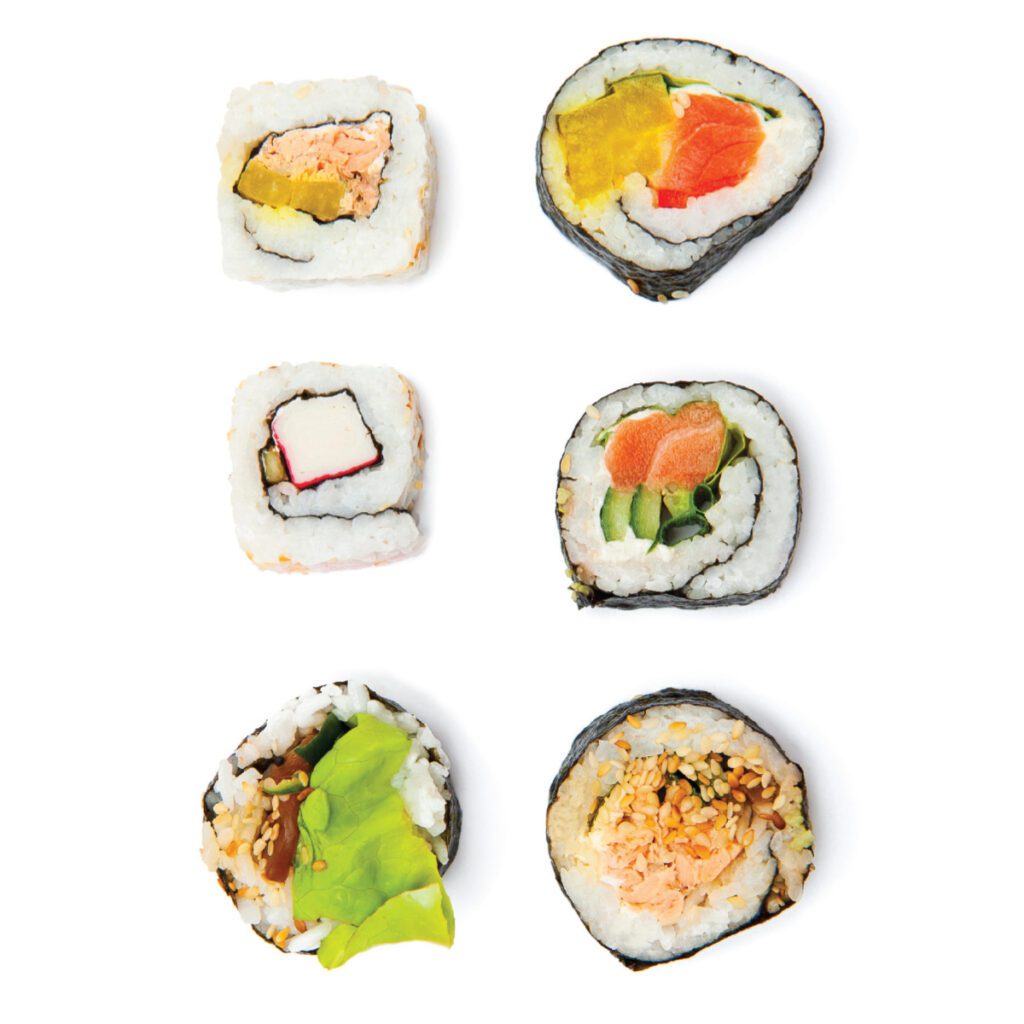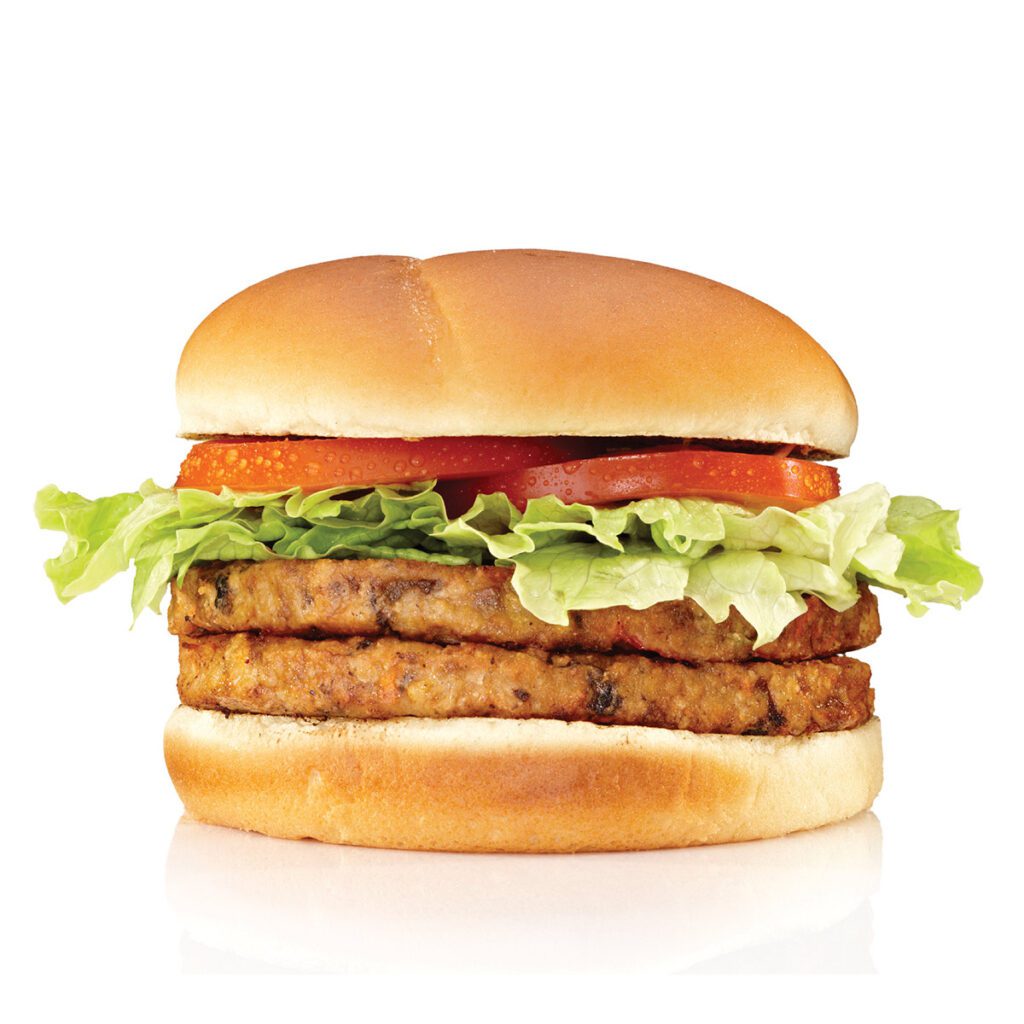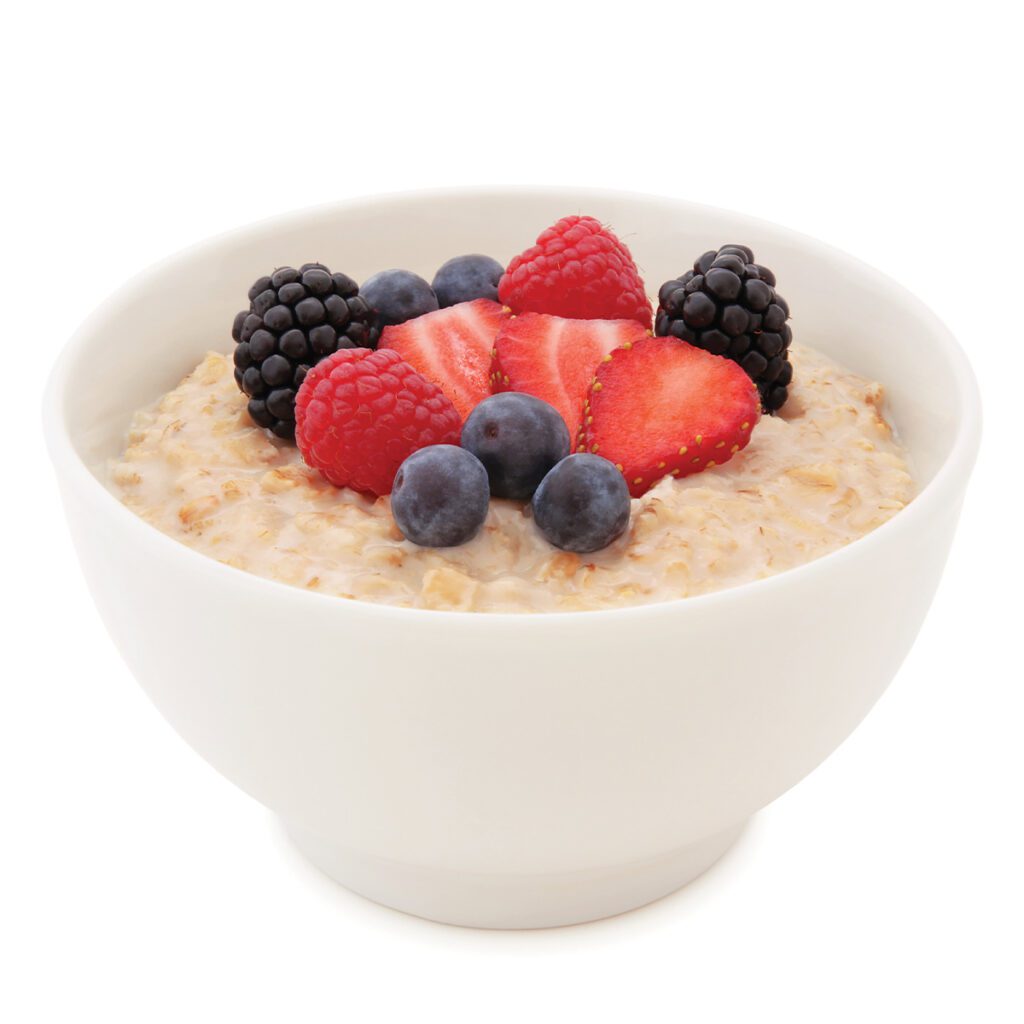Which one is healthier?
Registered dietitian Allison Knott sets the record straight on the healthy choice between two similar foods.
Grilled Fish vs. Sushi Roll
Some options at your favorite sushi restaurant can be deceptively high in calories and sodium. The standard sushi roll typically consists of four parts: rice, nigiri (seaweed wrap), fish, and vegetables or fruits. When made with fish (that hasn’t been battered and fried) plus vegetables, the sushi roll can be enjoyed as a healthy option. But the sushi roll can quickly become a high-calorie, high-fat meal when tempura fish, cheese, and mayonnaise-based sauces enter the picture. Add a side of soy sauce for dipping, and you’re likely to go well over the recommended daily amount of sodium in a single meal. Opt for a simple, grilled fish if available, since you’ll still reap the benefits fish has to offer without the extra calories and fat. If a sushi roll is what you crave, make it healthier by swapping tempura fish for fresh fish, skipping the mayonnaise-based sauce, and adding extra flavor with fruits and vegetables. If you include soy sauce, ask for the lower sodium version. Bonus points if brown rice is available as a whole-grain option.


Turkey Burger vs. Veggie Burger
Even for meat eaters, the veggie burger is a great way to enjoy a plant-based meal without feeling as though you’re being deprived. Veggie burgers can range in ingredients that greatly influence flavor and texture. Soybeans, garbanzo beans, black beans, quinoa, rice, beets, squash, carrots, and even nuts and seeds like walnuts are just a few ingredients used in veggie burger recipes. When it comes to turkey burgers, you may be surprised to know that they aren’t always the leanest alternative to a beef burger. Turkey breast meat can be dry when ground and used as a turkey burger, so a mix of light and dark meat plus skin is regularly used to improve flavor and texture. This can up the calories and fat significantly, making the veggie burger a better choice in this case. Choose a whole-wheat bun when available, and limit high-sodium and high-fat toppings such as pickles and mayonnaise or extra cheese.



Tofu vs. Chicken
Tofu is a versatile, soy-based meat alternative that is used in a variety of dishes. When compared to chicken, its protein count is significantly lower at 10g per half cup versus 19g per half cup of chicken. Tofu is slightly higher in fat and contains fiber whereas skinless chicken has less fat and no fiber. Tofu is also a source of calcium, something chicken doesn’t have. The bottom line: both chicken and tofu have their benefits and can be a healthy addition to your meal, but as always, cooking method is key. Mixed chicken dishes are one of the top contributors to sodium intake in the American diet, so choose wisely when ordering chicken out or preparing at home. Since tofu alone doesn’t have a distinguishable taste, it’s often fried or prepared with sodium-laden sauces. Stick to low-sodium, low-fat preparation methods such as using vinegar-based marinades or fresh herbs to add flavor and roast, bake, or grill to cook.



Granola Bar vs. Oatmeal
Granola bars are often packed with added sugar in the form of candy coatings and syrups. For that reason, oatmeal is the clear winner when compared to granola bars, but this doesn’t come without a few caveats. Plain oatmeal is a whole grain that is a good source of soluble fiber. When prepared with the addition of fresh fruit, lean proteins, or nuts and seeds, oatmeal becomes the base of a healthy meal. However, added sugars, such as those found in packets of flavored oatmeal, can sometimes tip the sugar scale in the wrong direction. It’s also easy to go overboard with your own added sugars such as brown sugar or honey, so limit to no more than 1 teaspoon per serving.






Allison Knott MS, RD, LDN
Registered Dietitian, Nutrition Communication and Wellness Consultant

